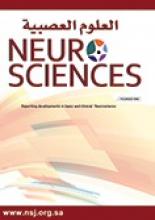Abstract
Traumatic brain injury (TBI) is considered an epidemic that continues to compromise the welfare of humankind. Despite the extensive efforts invested in countering this clinical health problem, current clinical science and technology still fall short of providing a pharmacological cure for TBI rendering tens of thousands of TBI patients vulnerable to its detrimental sequelae. Over the past 30 years, the understanding of the pathophysiological mechanisms of TBI indicates that the pathology of TBI is biphasic. It comprises 2 injuries; the primary and the secondary injuries. The primary injury occurs simultaneously with the impact that caused the injury, which explains why this injury is not amenable to acute intervention. Whereas the secondary injury is a composite of interwoven pathophysiological responses that commence after the initial trauma leading to delayed, non-mechanical impairment of neuronal structure and function. In this review, we aim to highlight the main pathophysiological mechanisms that take place in the primary and secondary phases of traumatic brain injury.
- Copyright: © Neurosciences
Neurosciences is an Open Access journal and articles published are distributed under the terms of the Creative Commons Attribution-NonCommercial License (CC BY-NC). Readers may copy, distribute, and display the work for non-commercial purposes with the proper citation of the original work.






